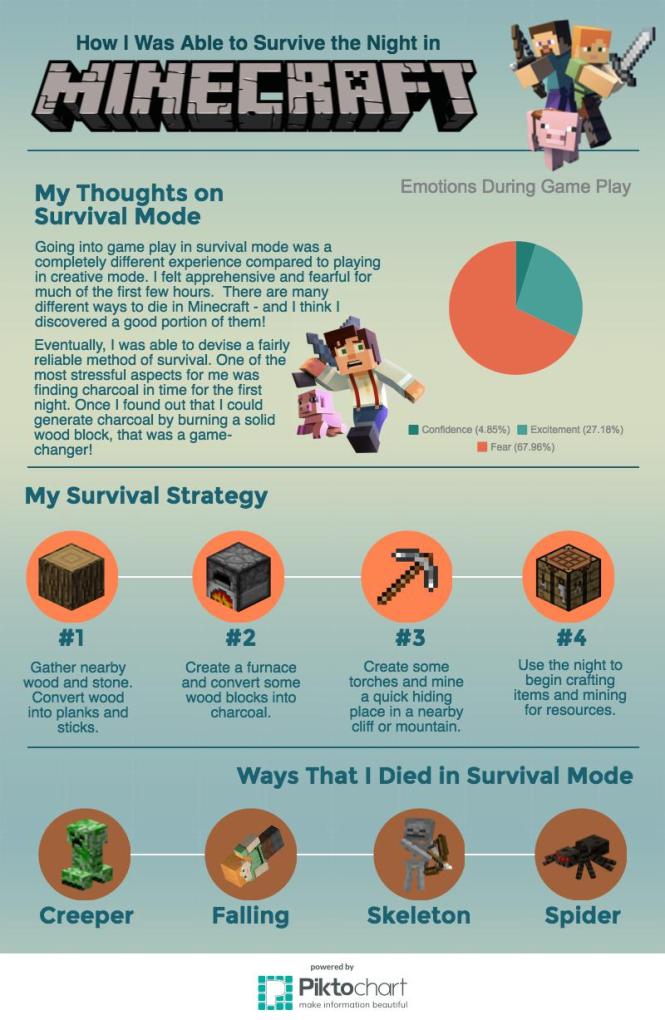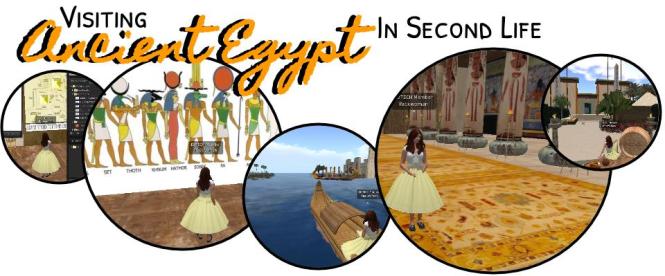|
As I learn more and more about Minecraft and how it can be implemented with students, I finally reached the point where I realized that I need to spend a lot more time immersed in this virtual world. So, I spent the last few weeks developing my gaming proficiency in MC and I have to say - I love it. There's a concept in gaming referred to as a state of "flow." Flow is a headspace of heightened productivity, wherein many great things are accomplished and the idea of NOT continuing the game seems impossible. Experiencing the state of flow has helped me have greater empathy for my students. Of course traditional learning environments can pale in comparison to the challenge and excitement that virtual worlds can offer! This begs the question - why not make school more like a game? I'm not just talking about the gamified elements offered by Classcraft or badges. I'm talking about full on immersion in a virtual space. As I continue to think on what that could look like in my classroom, in my content area, with my students, here's an infographic I designed about my MC experience thus far: You can view the high resolution version of this graphic on Piktochart.
0 Comments
My teaching philosophy is firmly rooted in a constructivist point of view, which is probably why I have come to enjoy exploring virtual worlds so much. To date, I have appreciated the opportunity to construct my own meaning based on my experiences in Minecraft. I find that even though the Minecraft portion of this class is over, I still play for fun and for the joy of being creative in a virtual space. I am actively pursuing Minecraft licenses for my classroom and just managed to talk the district ETIS staff into updating the OS on my seven classroom iMacs in order to run Minecraft: Education Edition. The value of Minecraft was easy to see right from the start; I quickly figured out how the game could integrate into my curriculum and I have spent a lot of time thinking about how to structure the experience for maximum productivity in the classroom. Second Life has been a bit of a pedagogical mystery for me. From the beginning, I felt skeptical toward Second Life because I know that it is a tool that will never be appropriate for my ten and eleven year old students. There is too much adult content that is easily accessible, and the immersive quality of the world is routinely compromised by the glitchy nature of the interface. (Even though I am working on a Macbook Pro with updated OS, using high speed Internet.) Despite these challenges, I have remained open to anything that I can glean from the Second Life experience in order to help me better create learning opportunities for students in other virtual worlds. This week, I explored some educational spaces in Second Life and learned a lot! First, the overall successfulness of a space seems to depend on the level of forethought that the designer put into generating the world. One of the places I visited was ancient Egypt, and the designer created a landing pad that right away began to communicate information. There was a labeled image of Egyptian gods on the walls, and a helpful map that dispensed notecards with links to various locations around the world – such as King Tut’s tomb, the Great Pyramid, and the Sphinx, to name a few. The person who created ancient Egypt employed a rich level of detail and historical accuracy in their design. There were many monuments to explore, but I was even more interested in finding ways to interact with my virtual environment. Sacred cats roamed in the temples, and lush walled gardens were fun to explore. There were “hands-on” elements, too, such as learning Egyptian dance, sailing papyrus boats down the Nile, and riding camels. These added features brought a level of entertainment and “worldness” to the space, which helped immerse me in the experience of being in ancient Egypt. As an educational space, the iconography and materials/textures were a really effective way to communicate information about Egyptian art, architecture, and culture. A space like this could be important for students to experience, because it brings relevance and excitement to the curriculum. Another educational space that I explored was Yoruba Town. What I liked about this space was that it was overtly educational; users can click on blue tiles around Yoruba Town to receive notecards that contain information about African culture, economic structure, social structure, wildlife, and food. There were also several NPC’s (non-playable characters) built into this world, and with a click users can interact with them. The overall experience of Yoruba Town was, perhaps, a little less immersive than the ancient Egypt sim. One of the notecards indicated that the world is still under construction, which may explain why some of the detail is missing. Whereas ancient Egypt had a plethora of objects to interact with, Yoruba Town had few in comparison. Much of the understanding that can be gleaned in the Egypt sim stems from experiential learning; Yoruba Town depended predominantly on notecards to communicate purpose and meaning.
In order to design an effective educational space, I would want to combine the best of ancient Egypt and Yoruba Town. The rich level of detail from Egypt combined with the guiding purpose of the notecards would strike the right balance that makes a virtual educational space worthwhile. My impression of virtual worlds as educational spaces is constantly evolving. There is something so unique and wonderful about teaching and learning in a virtual world that I am always left eager to learn more. My big take-away idea from exploring virtual educational spaces is that they are created intentionally, with attention to design, detail, and “worldness.” The most effective spaces I have visited have achieved a special balance of these attributes, which makes them compelling to experience. |
Author: Jessica PackCalifornia Teacher of the Year. CUE Outstanding Educator 2015. DIGICOM Learning Teacher Consultant. 6th Grade Teacher. Passionate about gamification, Minecraft, digital story-telling, and fostering student voices. Download:Archives
June 2020
Categories
All
|




 RSS Feed
RSS Feed